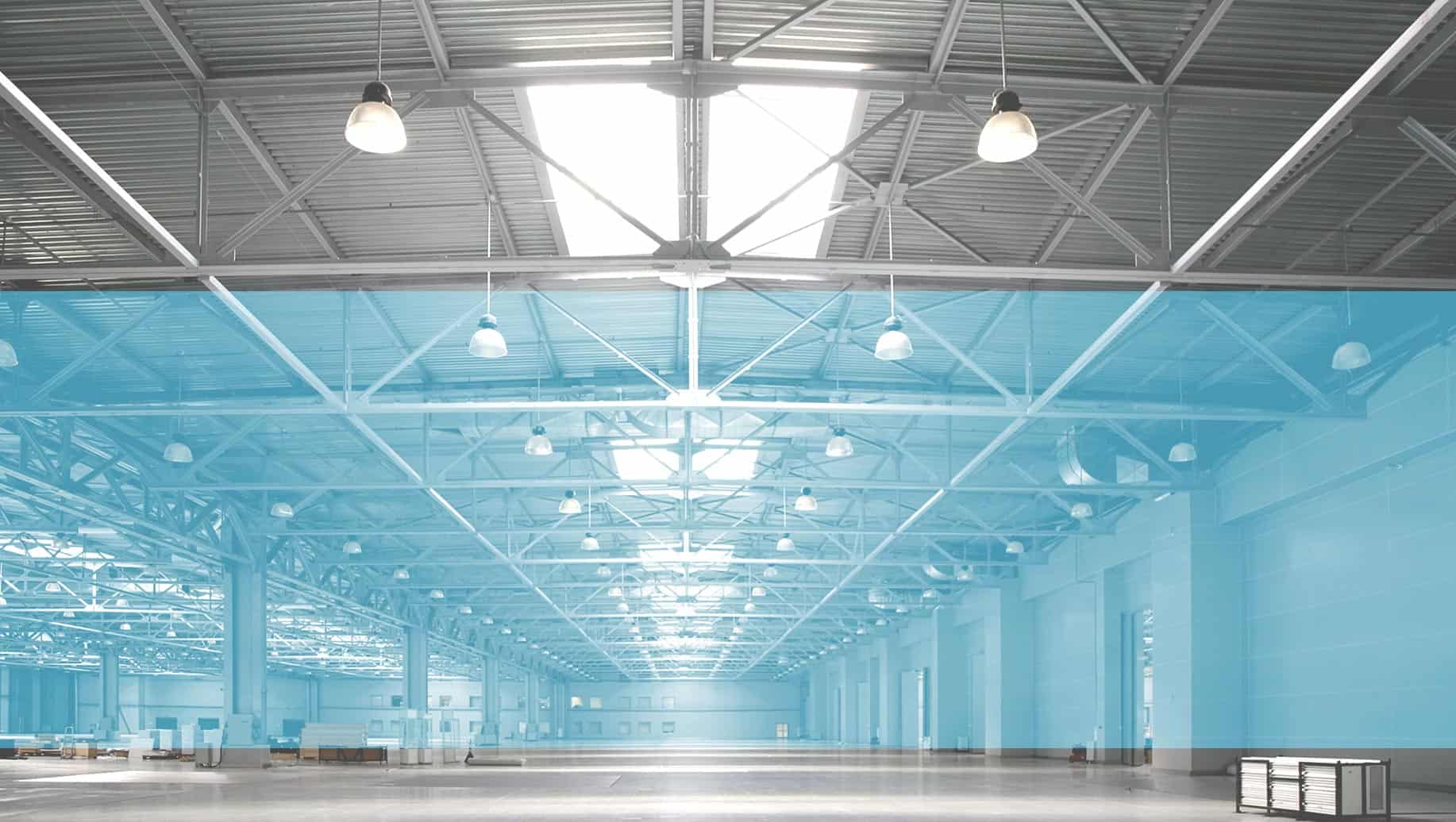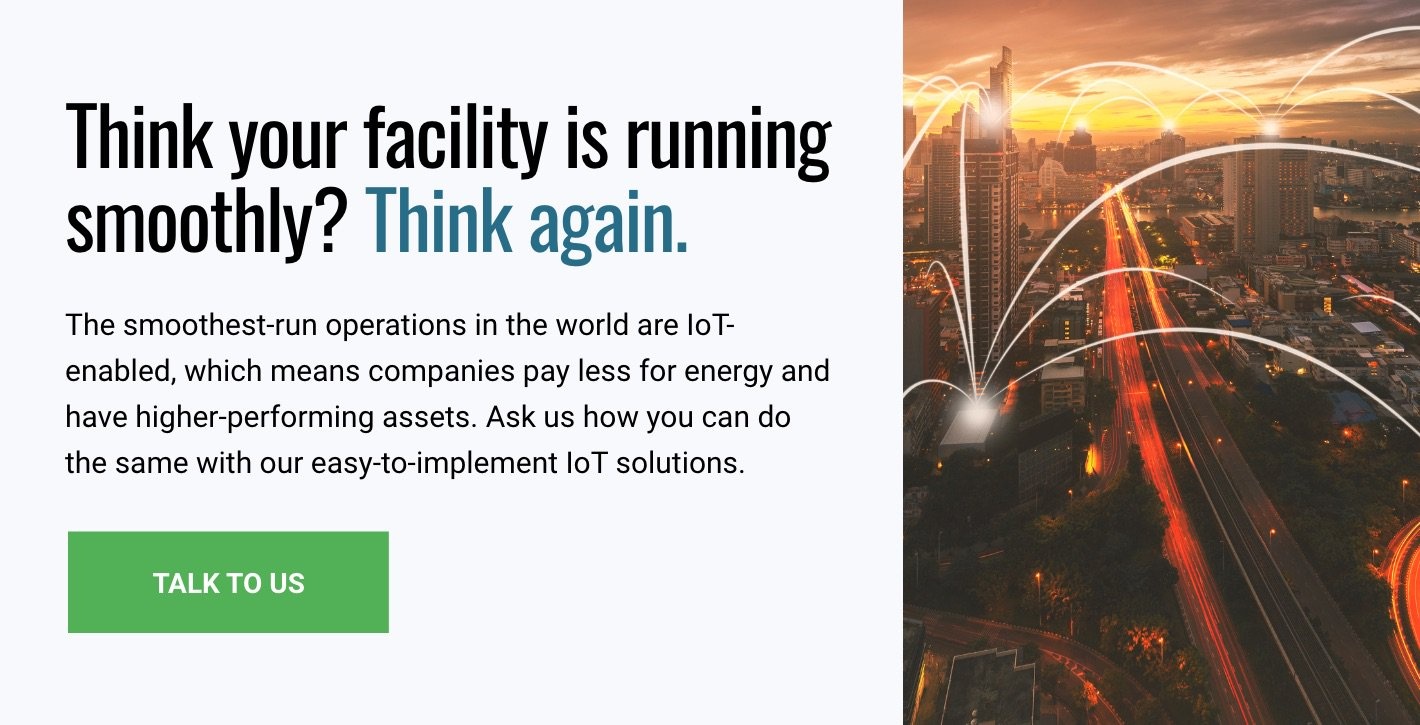As they say, necessity is the mother of invention. Historically, the manner in which we produce and deliver light has made incremental improvements since the days of the kerosene lamp—each iteration solving challenges posed by the previous method. Edison’s incandescent light bulb in 1880 was a huge leap forward, proving to be more economical, convenient, and safe than the widely used gaslight. Today, we continue to look for ways to reduce lighting costs even further, and use energy more wisely.
IoT lighting is the latest game-changer. As an industry, its value is expected to grow to $4.5 billion by 2026; it’s also being called a “disruptive force in the lighting industry.” So what exactly is IoT lighting and how can your commercial building benefit from it? Keep reading to find out.
IoT-based “Smart” Lighting
As business owners and facility managers become more conscious of energy use, the more likely they are to implement some type of lighting control system. Many of these systems are in place today already, sometimes as part of a building management system (BMS). Being able to create a set schedule for the lights (to turn them off when no one’s around) helps save energy and lowers costs.
Upgrading your building’s lighting is one of the best ways to slash energy costs. Talk to Iota about our LED retrofit services.
An IoT lighting system goes a step (sometimes several steps!) further. Imagine lights illuminating a room just minutes before a conference is scheduled to start. Or accessing information about how long a customer has been standing in a retail store aisle, and what they’re looking at. These things can be accomplished with IoT lighting.
IoT smart lighting uses wireless switches, eliminating the need to wire light switches directly to fixtures. Those bulbs are then connected to a network, allowing them to be monitored and controlled from the cloud. Via the web or a mobile app, you can manage individual lights or groups of lights based on things like occupancy, external light levels, and times of day; you can also control dimming and color-changing. And smart fixtures like these can also convey information about broken and burnt-out lighting, all in real-time.
And since lights are ubiquitous in buildings, these connected bulbs are also an excellent conduit for gathering additional data about a building. Sensors can be embedded into the fixtures for the purpose of accumulating and transmitting information about a facility, including room occupancy, air quality, and temperature, among other things. The more information you have about how your building is used, the better equipped you are to manage it more efficiently.
Some interesting potential uses for IoT lighting in commercial facilities are:
- A lighting-based indoor positioning system: In late 2017, Target implemented indoor positioning using Bluetooth chips embedded in LED ceiling lights. Shoppers’ phones get access to an interactive store map that guides them around the aisles to products they’re looking for. And Dubai’s Hamdan Bin Mohammed Smart University uses IoT lighting controls to guide students to classrooms.
- Asset tracking: For critical assets tagged with sensors, IoT lighting can be used to locate them based on the signals they give off.
- Monitor conditions for perishable goods: Goods that require certain environmental conditions such as temperature and humidity levels can benefit from smart lighting solutions that are constantly monitoring the storage room or area. Alerts can be set to detect anomalies and prevent spoilage.
- Space utilization: IoT lighting can gather occupancy data, which can then be analyzed to optimize building usage. Analysis of this data helps you better manage your space, and respond to under- or overutilization.
An Intelligent Lighting Strategy Starts With LEDWhether you’re considering implementing an IoT-based “smart” lighting system or not, it’s wise to evaluate the most basic element of your lighting strategy: the light bulb. Incandescent bulbs are still widely used, but that’s changing with the advent of LEDs. Essentially, LED bulbs produce more light than traditional bulbs, but because they do so more efficiently, less of the energy radiates from the bulb as heat. When they were first introduced, they produced more of a “cool” white light; today they offer the same natural-looking “warm” light as incandescents. Numerous companies worldwide have already switched to LED lights, which can easily be installed in pre-existing lighting fixtures in most commercial buildings. The reasons they’ve switched: LEDs use up to 75 percent less energy than incandescent bulbs; last 25 times longer; and often produce better quality light than incandescents. In addition to the money saved in energy use, many utility companies offer rebates as incentives for companies to switch. Lighting retrofit is often considered a “low-hanging fruit” that instantly and easily helps achieve significant reductions in energy usage. LED lighting isn’t just for office buildings. It can also be used for just about every other type of commercial facility as well:
Because LED lights are naturally friendly to digital controls (they include a semiconductor to produce light), they are perfectly suited for IoT applications. IoT LED lighting is the ideal way to realize maximum savings—and gain the valuable operational insights that can improve all aspects of your building management. |
Are you interested in reducing your building’s energy bills?
Optimizing your building’s lighting system is a great way to start seeing savings, but there are also other things you can do to reduce your utility bill. Aside from an LED lighting retrofit, two of the simplest smart building solutions (and the ones that produce the most significant savings) are automated demand response and automated demand control ventilation.
Iota can help. We’ll work with you to design a custom smart LED lighting solution that delivers maximum financial impact for your building; we can also provide the tools and expert advice you need to reduce your energy consumption and demand charge. To learn more about our smart building solutions and LED retrofit services, visit our website or contact us.


